Beijing is more than just the Forbidden City: 5 Modern Architecture Marvels in Beijing
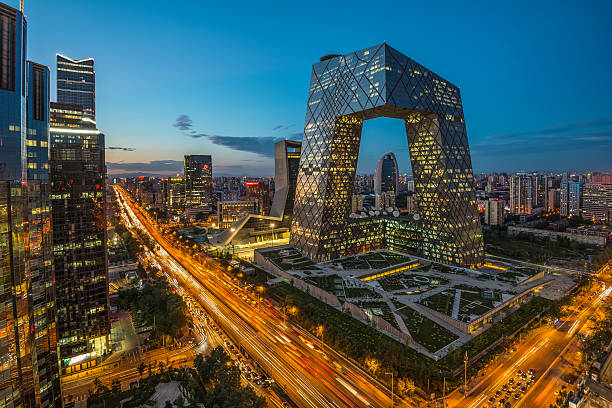
When thinking about architecture in China, the word ancient comes to mind. Stone tiled roofs, symmetrical house designs, small courtyards, and of course, fengshui. Yet, Beijing’s many examples of futuristic architecture shows that the country has been embracing newer, less traditional styles for a few decades now! Remaining true to the values which have shaped Chinese art and architecture throughout its history and taking strides into newer styles, some of Beijing’s modern architecture marvels are a sight for locals and tourists alike! Take a look:
1. The Great Hall of the People
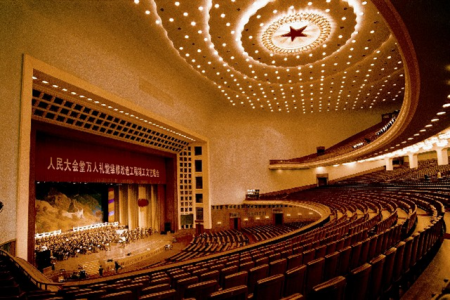
Home to multiple governmental conferences and committees, the Great Hall of the People was the pinnacle of the “Ten Great Buildings” in Beijing that were built in 1959 to commemorate the first decade of the People’s Republic of China. The building faces west toward Tiananmen square and the Monument to the People’s Heroes and has become a symbol of the National People’s Congress in China.
- Architect: Zhang Bo (Chief Architect)
- Style: Socialist Realism.
2. The National Centre for the Performing Arts
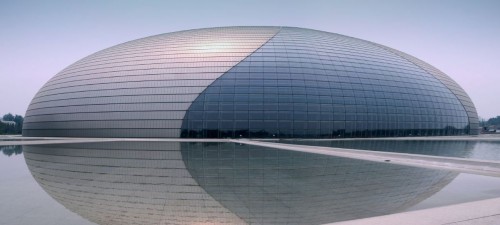
The National Centre for the Performing Arts sits at the center of its own lake directly west to the Great Hall of the People. It is often called The Giant Egg for its ellipsoid shape which looks, well, like an egg. The Centre, completed in 2007, seats over 5,000 in its halls! The Centre’s design sparked controversy during its construction because it was so near the Forbidden City and Tiananmen Square. Many felt it should have reflected traditional Chinese architectural style. The completion of the project (among many others) signified a shift from traditional Chinese architectural values, toward more modern and postmodern styles.
- Architect: Paul Andreu
- Style: Modernist
3. National Library of China (Second Phase)
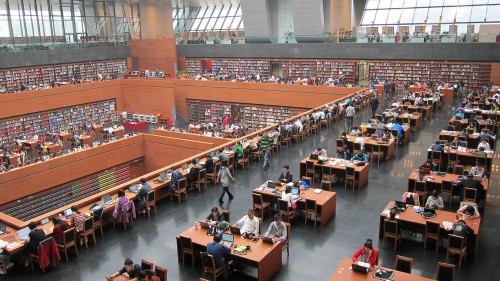
The Beijing National Library is the largest in Asia and among the largest in the world! The Library was built during the Qing dynasty as the Imperial Library of Peking. In 1928 it was changed to the National Peiping Library and later changed to the National Library of China, the official name it holds today. In 2008, the library opened its ‘second phase’ extension, a 250,000 square meter building containing nearly a million items. The building is made up of three constructional layers: an earthbound historic base, a publicly navigable and translucent central portion, and a digital roof layer which signals the future of information storage and recollection. Interestingly, the library provides access to the visually impaired via the digital library for the blind program that utilizes sound control computers.
- Architect: KSP Jurgen Engel
- Style: Mixed
4. National Aquatics Center
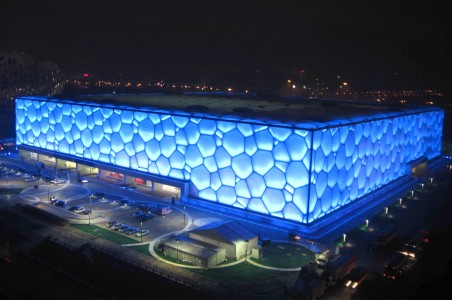
If you followed the 2008 Beijing Olympics closely, you should recognize this building very easily as the one where Michael Phelps won eight medals for the United States. The National Aquatics Center is also referred to as 水立方 (pinyin: shuǐ lìfāng), or the “water cube”, for both its cubic form and watery color. It was built between 2003 and 2008 to serve as the main aquatics center for the Olympics. Since then, it was transformed to serve the public as the nation’s largest water amusement park.
- Architects: Chris Bosse, Rob Leslie-Carter
- Style: Deconstructivist
5. CCTV Tower
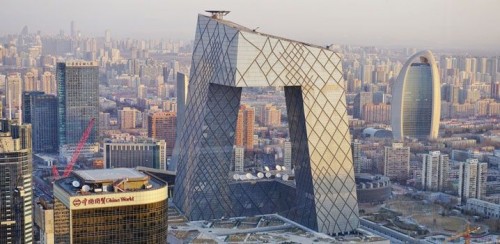
Overlooking Beijing’s central business district, this 768-ft skyscraper has developed fame among Beijingers for its distinctive shape. Its style and presence in Beijing serves as a marker of foreign influences on the contemporary architecture of China. The tower is a product of both Chinese and Western participation and ingenuity. The tower was built as three buildings that were joined together throughout its construction, and while it is the home to China’s prominent broadcasting network, the Chinese Central Television (CCTV), many locals simply refer to the building as 大裤衩 (pinyin: dà kùzi)-‘big pants” or “big boxers” for its vague resemblance to legwear!
- Architects: Rem Koolhaas, Ole Scheeren, Cecil Balmond
- Style: Deconstructivist
Read more:
You’re Not From Around Here, Are You? | Visiting the Great Hall of the People – Beijing, China
China Highlights | Water Cube
Thebeijinger | The National Library’s New Building
Twisted Sifter | The Egg Building in China